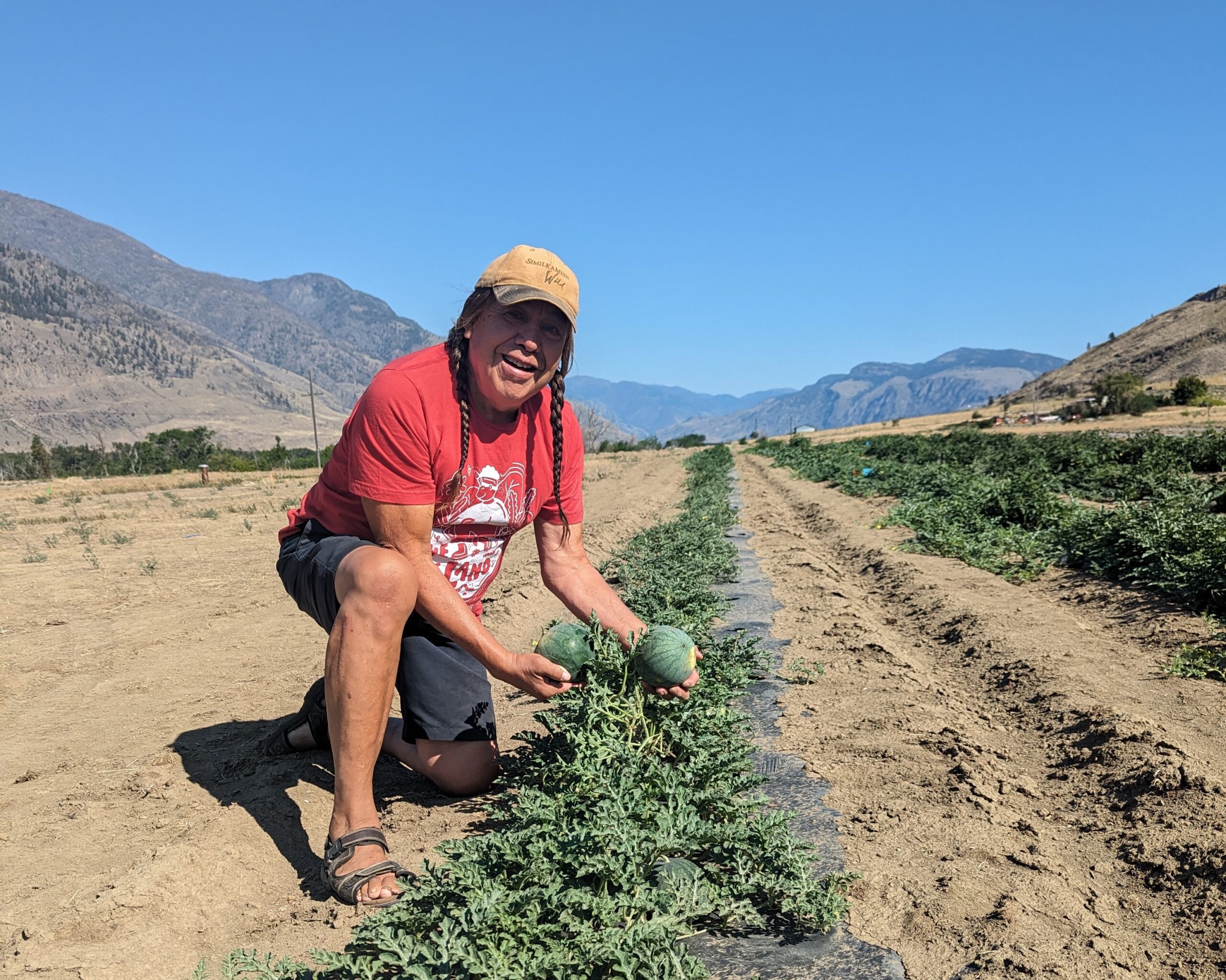The Similkameen Valley is known for its diverse agriculture through ranching, farming, orchards and vineyards. The Lower Similkameen Indian Band (LSIB) has a long history of food production and once operated a market garden for the LSIB community. While the land has not been farmed for decades, the Band is re-investing in its agricultural roots with an updated agriculture plan that will ensure food security for the community, new jobs and other long-term economic benefits.
Dixon Terbasket grew up in the community and is the Project Manager for the new agriculture plan.
“The original 2018 agriculture plan was focussed on establishing a certified organic community market garden, but implementing the plan was delayed with the impacts of COVID, climate change and other priorities for Chief and Council,” says Terbasket. “When an opportunity came up to apply for a significant infrastructure grant through the Indigenous Agriculture Fund, it was time to act on our ideas.”
ETSI-BC, the Economic Trust of Southern Interior, has supported several agriculture projects in the Southern Interior and was delighted to provide the LSIB with a $15,000 grant in 2022 to update their plan so they could submit it to the Indigenous Agriculture Fund. The project aligns with the Trust’s Building Economic Development Capacity funding stream, which prioritizes smaller, rural and First Nations communities in the BC Southern Interior.
New Lens on the Original Plan
With the ETSI-BC funding, the project’s vision and goals, timelines, projected income and expenses were re-evaluated and adjusted. The new plan, named the Lower Similkameen Community Farm and Garden/Organic Market Garden, focuses on food security, and on developing and retaining farming in the community on a smaller, more practical scale.
The larger Indigenous Agriculture Fund application was approved in 2023, and it allowed LSIB to establish about 1,000 root stocks in the nursery, purchase and install a new pump and pumphouse, identify electrical requirements for Fortis and upgrade the irrigation system. A greenhouse and a tractor have been purchased and work is underway to bring power to the site. “Our goal is to be completely ready by the time the ground freezes for planting to begin in the spring of 2024,” says Terbasket.
Community members have been actively engaged through a new round of community consultation to provide input into crop selections that are native to the community. Youth workers will be working in the community’s schools to educate students about agriculture.
A Phased Approach
The one-to-five-year plan is supported by further funding sources and will be developed in phases.
“Initially, crops will be grown to feed the local community with any excess sold to produce income,” says Terbasket. “Once a processing facility is built, revenue from that will sustain the project and other revenue streams will open up related to processing and storage.”
A full-time Project Manager will be hired along with seasonal farm assistants. Use of local trades has begun and will continue throughout the project.
“Further down the road, we will see what businesses arise,” adds Terbasket. “In the meantime, we will focus on teaching agriculture, harvesting and post-harvest handling, and ensuring students and community members remain engaged. One band member has already shown interest in expanding her bone broth business by working with the food hub.”
Terbasket says their greater vision includes a community gathering centre where arts and culture are part of food celebrations, and story telling around food education. “Right now, to have the funds to create the greenhouse, garden and farm with running water and power is a huge step forward,” he says. “ETSI-BC really got the ball rolling.”


